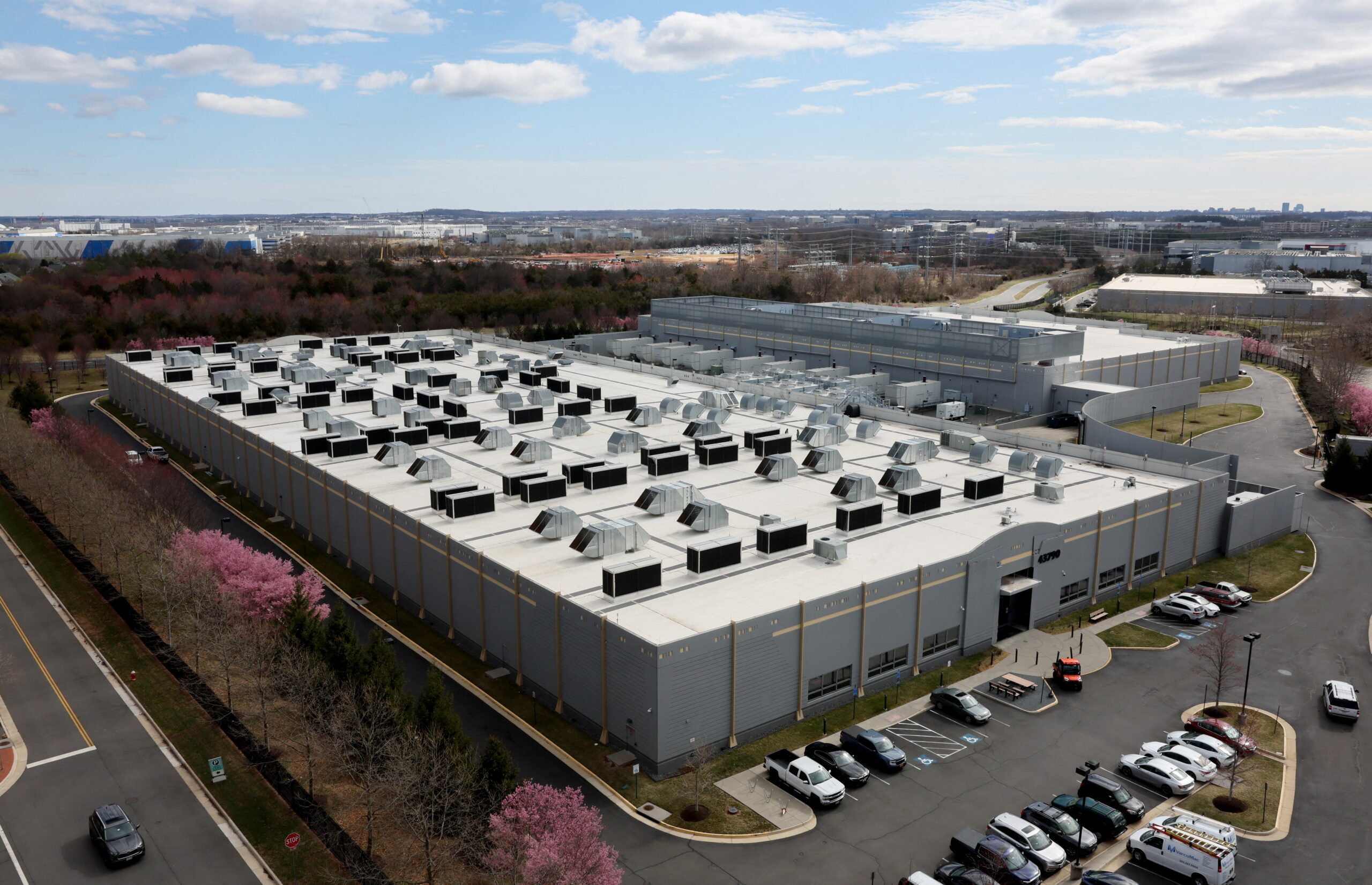On Tuesday, the US Senate voted 99-1 to remove a provision in the Trump administration–backed One Big Beautiful Bill Act that would have placed a ten-year moratorium on state-level artificial intelligence (AI) regulation. The stated intent of the pause was to avoid inconsistent subnational policies in the absence of a federal framework. The Senate’s rejection of the pause highlights an important challenge for the administration: The executive branch and state governments do not always see eye to eye on AI, especially when it comes to AI infrastructure.
The benefits of AI are diffuse and often speculative, while the impacts of the infrastructure buildout—health impacts and higher energy costs for consumers—are often tangible and local. Local opposition has already led, for example, to the blocking or delaying of $64 billion worth of data center projects in the past two years. This opposition complicates the White House’s goal of retaining the United States’ global leadership in AI.
Even as the Trump administration pushes for a rapid expansion of data centers in the United States, greater coordination between the federal and state levels is needed to avoid oversupply and sunk costs, while ensuring that AI development serves the public interest.
Past as precedent
Data centers can be attractive sources of revenue, especially as investments shift from mature markets such as Virginia, Texas, Arizona, and California, to emerging ones such as Indiana and Louisiana. The “data center gold rush,” as some call it, is exemplified in Stargate, a $500 billion venture led by OpenAI and SoftBank focused on building AI infrastructure. In March, Stargate signed off on its first project, a $7.1 billion data center park in western Texas.
Virginia is home to the world’s largest concentration of data centers, with 5.9 gigawatts (GW) in data center capacity, a further 1.8 GW coming online soon, and a stunning 15.4 GW planned, with much of the new capacity driven by AI. For context, the global total operational data center capacity is 40 GW. Moreover, Virginia’s data center industry already contributes an estimated 74,000 jobs, $5.5 billion in labor income, and $9.1 billion in gross domestic product to the state’s economy each year.
At the same time, the data center market is being built on what may be at best an overestimation and at worst a bubble. A 2023 study notes that the cost of the new generation and transmission buildout required to support data centers could increase costs for all customers. The average household could, for instance, see an increase to its utility bill of between fourteen dollars and thirty-seven dollars per month by 2040.
A haphazard buildout will also have effects on public health. A 2024 McKinsey study quantified the cost-of-healthcare burden on households from increased emissions, finding that the most impacted communities have household incomes below the national median. The “Gold Rush” analogy, ironically, is also fitting in this context: the California Gold Rush of the 1850s displaced entire communities, compromised biodiversity, and distorted labor markets. More recently, the dot-com bubble saw a frenzied buildout of fiber optic capacity, with one post-mortem analysis presciently noting, “The investors who threw money at optics at the peak of the bubble probably would bankrupt us all if we ever hit a true ‘technological singularity.’” (Singularity here refers to a theoretical point of time when technological growth passes a point of no return, profoundly changing human civilization. It is most often cited these days in connection with artificial general intelligence.)
Pitfalls of overinflated expectations
China’s Eastern Data, Western Compute (EDWC) initiative offers both a model and a cautionary tale. Launched in 2022, it aimed to create ten national data center clusters in the country’s resource-rich, sparsely populated western regions. The data center clusters cost an estimated 400 billion renminbi ($55 billion) per year to operate, while the actual turnover in 2021 was 150 billion renminbi ($20 billion). Companies investing in these clusters are relying partly on government subsidies and mostly on expectations of future demand. Data-center service prices have fallen rapidly as supply has exploded. However, vacancy rates remain high.
AI-directed data centers, compared to traditional ones, have greater operating costs—potentially as much as two times as high—due to higher proportionate hardware costs and the need for always-on readiness. Furthermore, AI data center hardware depreciates as the integrated circuit arrays degrade or become obsolete. As one Chinese tech news outlet put it, “If a highway is built but only a few hundred cars are on the road each year, who will bear the amortized costs?” At the same time, EDWC also demonstrates the benefit of a coordinated approach that rallies the private sector and states toward a set of common objectives. The United States can learn from the pitfalls of overinflated expectations for demand, as well as the potential of such large-scale coordination.
Data about data centers
The US federal government needs to serve as an arbiter, with minimal but targeted interventions guiding investment for the public interest and maximizing the real benefits from AI. The likes of OpenAI, Meta and Amazon may well be able to risk multibillion-dollar investments in AI data centers. But smaller operators will not survive if they cannot recover the upfront investment, as China’s ailing data center market has shown. Furthermore, if the expected demand for AI data centers does not materialize, the costs of building out and running new energy capacity will fall on the remaining customers. Finally, with some jurisdictions seeking moratoriums on building new data centers or facing local backlash to new projects, and others competing to attract data center investments through subsidies and tax breaks, Washington should take on a coordinating role. This means the federal government should provide data points to track the risk of oversupply while respecting the rights of states to assess the impact of new projects on their communities.
In conjunction with the Trump administration’s push to use federal land for data centers, the Department of Energy should be empowered to establish an AI Data Center Monitoring Initiative (AI-DCMI). The AI-DCMI should collaborate with relevant federal entities, including the Department of the Interior, the Federal Energy Regulatory Commission, and the National Institute of Standards and Technology, as well as state energy offices.
Rather than duplicate established (albeit fragmented) efforts, the AI-DCMI could collate available metrics, such as the Department of Energy’s Data Center Energy Use Report. It could also develop new indicators where gaps remain, especially for assessing the impact on local communities, health, and competitiveness of the AI data center market, as well as the projected utilization of AI infrastructure. Federal and state incentives for data center–related projects, including the lease of federal lands, should be linked to reporting requirements under the AI-DCMI. Finally, consultations with data center operators and other nongovernment stakeholders should inform these metrics. The AI-DCMI should not have a regulatory function. But it should address a critical gap in the current ecosystem: the lack of state-federal coordination on understanding the risks of the current trajectory and concentration of AI data center investments.
This new Gold Rush will define the United States’ edge in AI—but only if investments are grounded in real demand. Without better state-federal coordination, the United States risks sinking billions into stranded capacity, with taxpayers footing the bill, while rivals surge ahead.
Trisha Ray is an associate director and resident fellow at the ’s GeoTech Center.
Image: A car drives past a building of the Digital Reality Data Center in Ashburn, Virginia, U.S., March 17, 2025. REUTERS/Leah Millis









